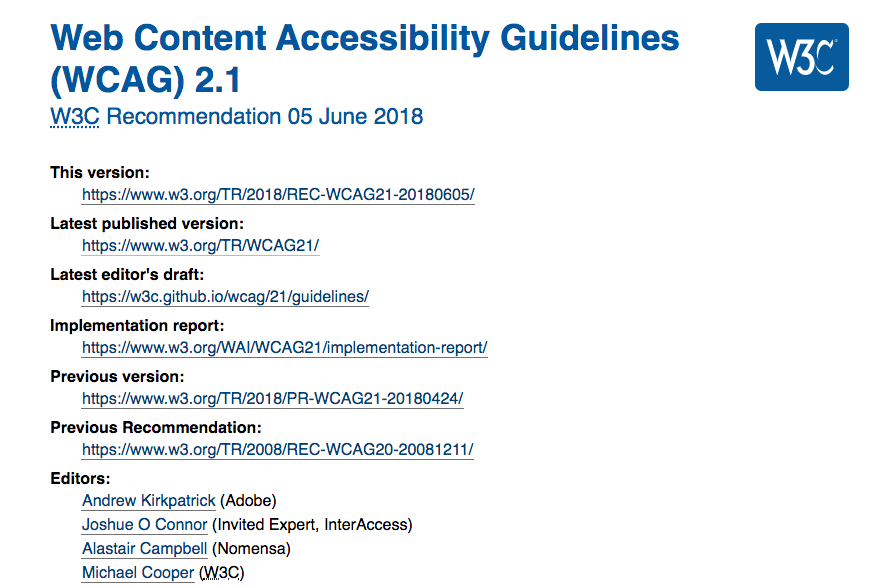
Web Content Accessibility Guidelines (WCAG) 2.1 defines how to make Web content more accessible to people with disabilities. Accessibility involves a wide range of disabilities, including visual, auditory, physical, speech, cognitive, language, learning, and neurological disabilities. Although these guidelines cover a wide range of issues, they are not able to address the needs of people with all types, degrees, and combinations of disability. These guidelines also make Web content more usable by older individuals with changing abilities due to aging and often improve usability for users in general.
WCAG 2.1 is developed through the W3C process in cooperation with individuals and organizations around the world, with a goal of providing a shared standard for Web content accessibility that meets the needs of individuals, organizations, and governments internationally. WCAG 2.1 builds on WCAG 2.0 [WCAG20], which in turn built on WCAG 1.0 [WAI-WEBCONTENT] and is designed to apply broadly to different Web technologies now and in the future, and to be testable with a combination of automated testing and human evaluation.







